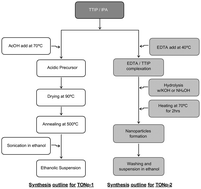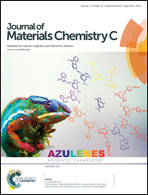Smectogenic liquid crystals and nanoparticles: an approach for potential application in photovoltaics
Abstract
We synthesized monomeric liquid crystals, M6R8 and I6R8, and nanoparticles of TiO2, to form a nanocomposite, which was characterized by polarized optical microscopy (POM), DSC and structurally by both wide angle X-ray diffraction and X-ray scattering using the planar geometry. The transition temperatures of the nanocomposites did not vary greatly with the concentration of TiO2. The alignment quality increases as the concentration of TiO2 increases from 7 to 30 wt% as can be observed using polarized microscopy and confirmed by the results of the X-ray scattering experiment. The alignment was not as good for I6R8, since in this case the liquid crystals attach to the nanoparticle just through the hydrogen bonding of the hydroxyl group in the aromatic cores. In the case of M6R8 an additional electrostatic interaction is present through the methacrylic groups which enhance the alignment. Although M6R8 shows better optical alignment, I6R8 presents a higher conductivity. This is because of the higher electron delocalization in the aromatic cores, where the nanoparticles are linked.


 Please wait while we load your content...
Please wait while we load your content...